These homemade donut holes are golden, crisp on the outside, and soft and fluffy on the inside. Ready in just 20 minutes — this is an easy donut hole recipe made with no yeast, no rising, and no hassle! Keep it classic or get creative with different glazes, fillings, and toppings.
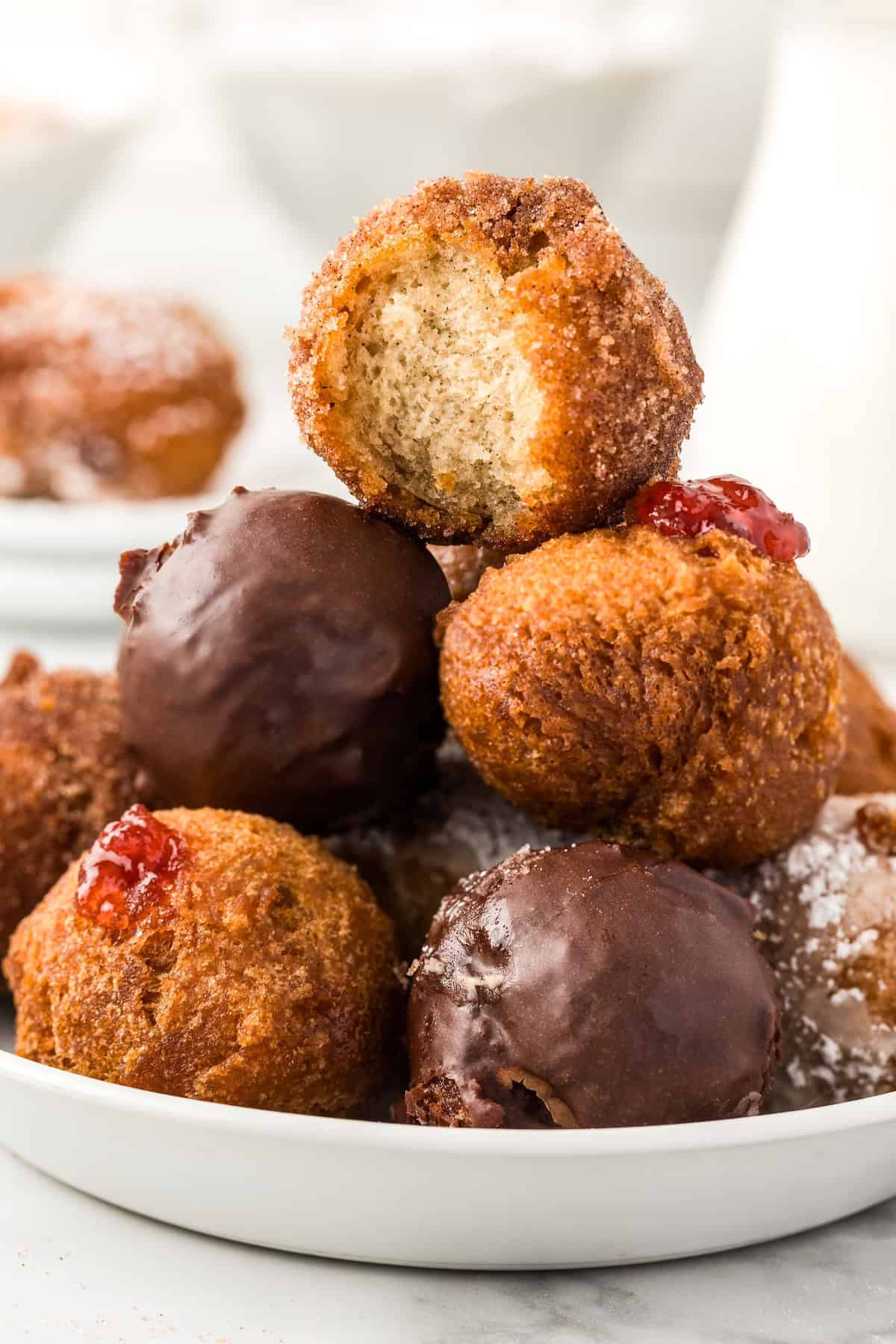
Recipe Rundown: What To Know
- Easy To Make: No yeast — just mix, fry, and eat.
- Skill Level: Super easy recipe that is great for first-timers!
- Texture: Crisp and fluffy with golden outsides and soft centers.
- No Special Tools: No deep fryer or donut pan needed!
- Customizable: Glaze, sugar, dip, or fill for endless flavor combinations.
- Simple Ingredients: You likely already have all the ingredients on hand.
Every Sunday morning, my kids beg me to make a batch of homemade honey buns or these donut holes. Seeing as I wrote a Mini Donuts cookbook years ago, they tell me I can’t complain. 😉 While I love all three, I will always pick these donut holes as they are fast, simple, and foolproof.
“This donut hole recipe was perfect for my family as everyone likes a different topping for their donuts. So soft and fluffy, I’m partial to the sugar glaze. 🙂 Definitely spray your cookie scoop with the non-stick spray, the dough came off very easily that way.” — Simone, skilled home cook and bread maker.
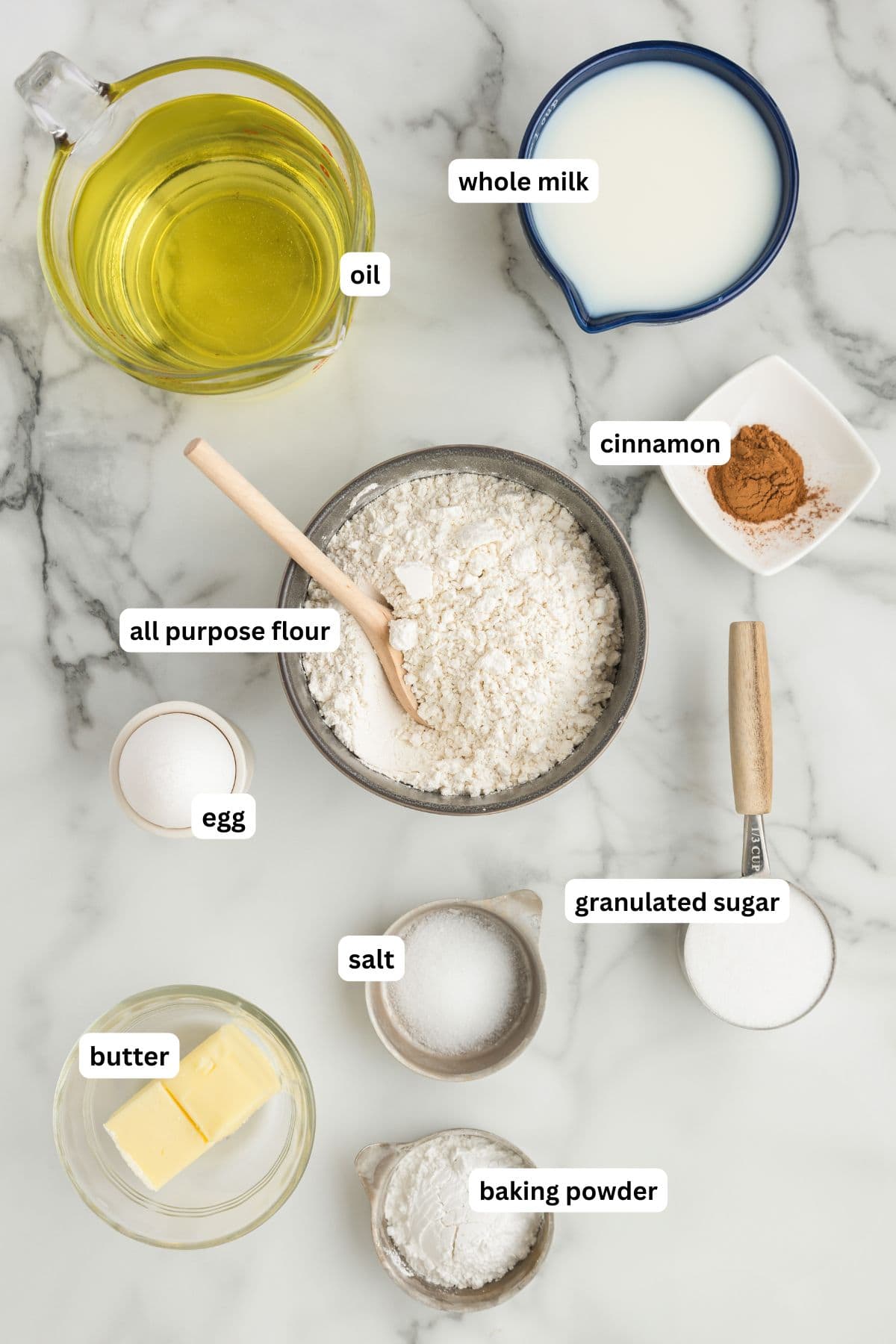
Key Ingredient Notes
Below you will find helpful notes and substitutions for a few key ingredients for the donut hole recipe itself. Further down in the post you will find more info on the different sweet toppings, fillings, and coatings you can try! Visit the printable recipe card below for ingredient amounts.
- Flour: Fluff the flour and then spoon it into your measuring cup, leveling it with the back of a butter knife. This will ensure you get the proper amount of flour for light and fluffy donut holes!
- Cinnamon: This is an optional ingredient for the donut batter, it adds a little warmth. I like to add a small sprinkle, especially when I know I’m going to turn them into cinnamon sugar donut holes.
- Baking Powder: Double check the label and make sure it’s not expired.
- Milk: Whole milk works best as it has a higher fat content, creating moist and soft donut holes. You can use 2% milk or evaporated milk as well.
- Oil: Choose a frying oil with a high smoke point, like vegetable, corn, or canola oil.
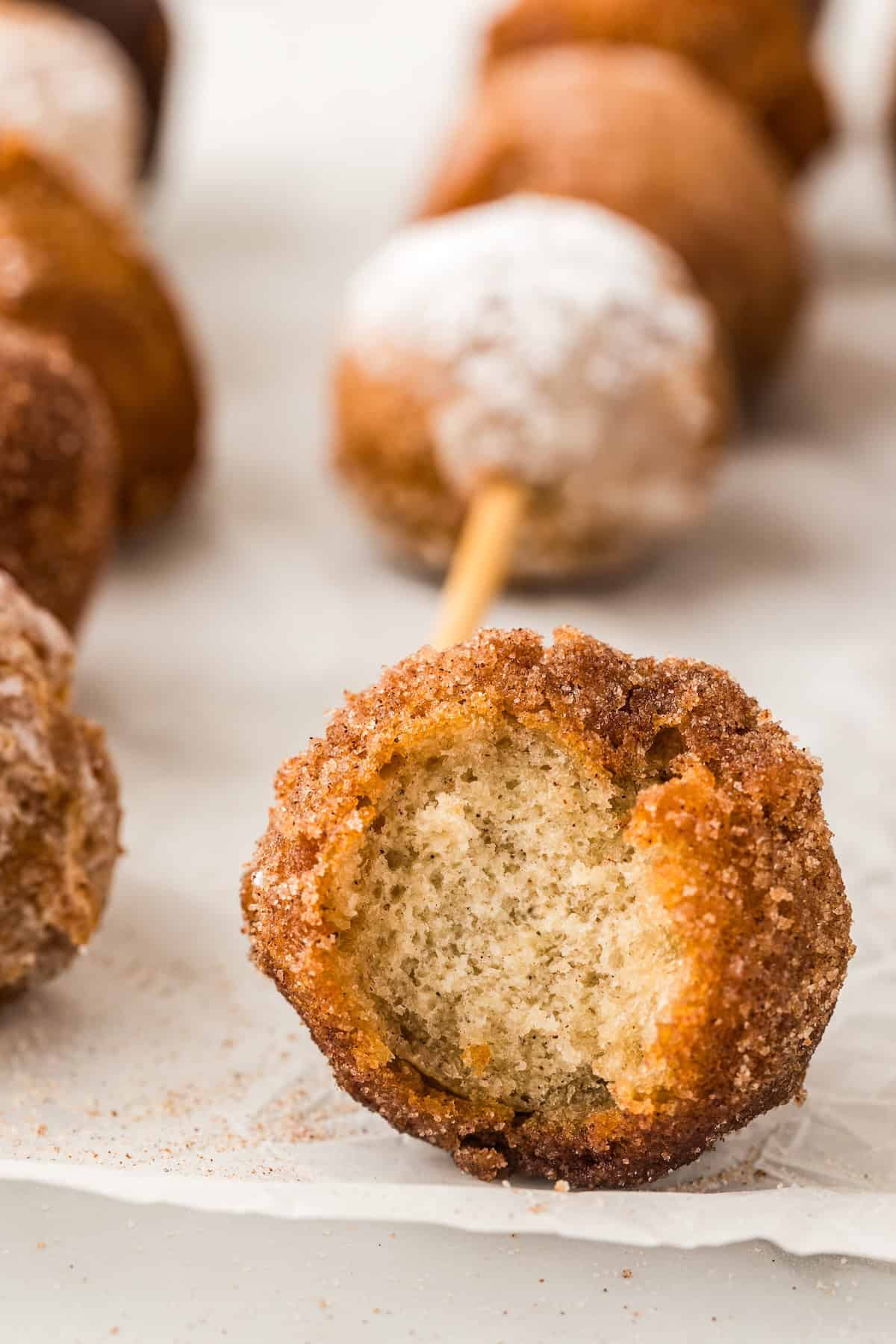
Tips For Making This Donut Hole Recipe
The donut hole batter is very sticky! I highly recommend using a small cookie scoop to drop them into the oil. It’s easier than using two spoons and creates even sized, round donut holes. You can also spritz the cookie scoop with non-stick spray before scooping the dough so it can easily drops into the hot oil.
My biggest tip? Do NOT try to eyeball how hot the oil is! Instead, use a clip-on pot thermometer to continuously measure the oil. Oil that’s too hot will cook the outside too quickly and leave the insides raw. Oil that’s too cool will take too long to cook, creating greasy donut holes.
Fry 5 to 7 donut holes at a time, to prevent overcrowding, which can drop the oil temperature and cause uneven cooking and/or greasy donut holes.
After frying, place them on a paper towel-lined plate to soak up excess oil before adding toppings. Glazes stick best when the donut holes are slightly warm, but powdered sugar works best when they’re completely cool.
Below is a quick recipe overview, but please scroll down to the printable recipe card for full instructions.
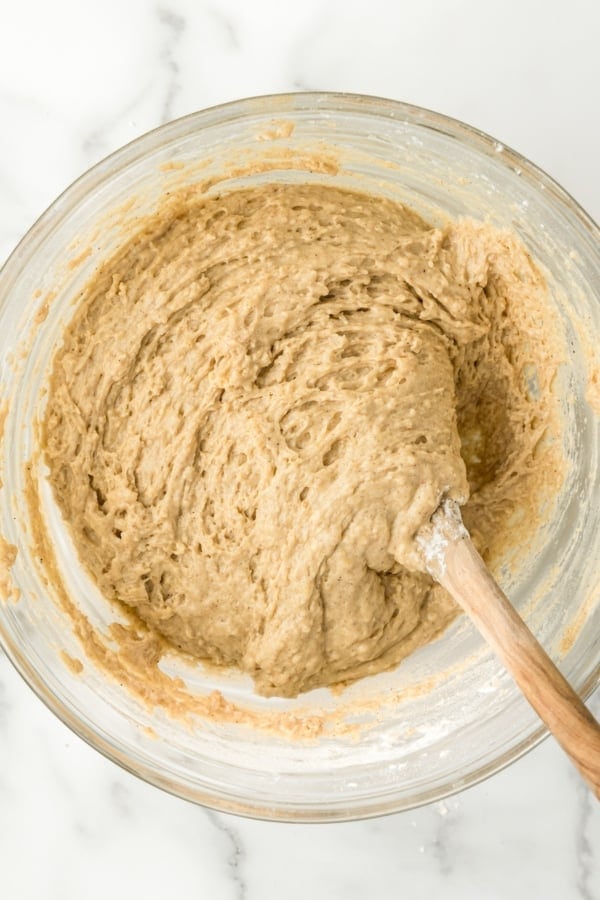
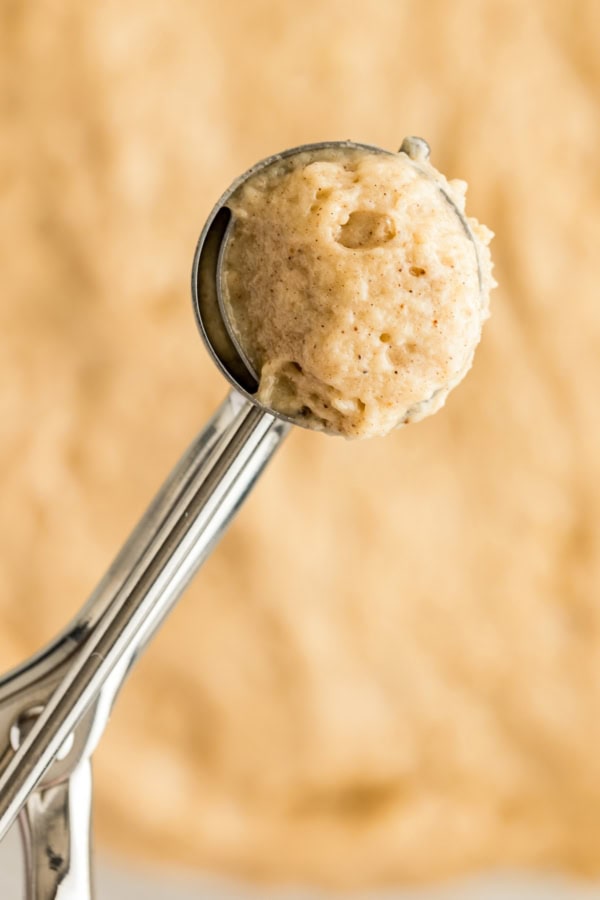
Want to save this recipe?
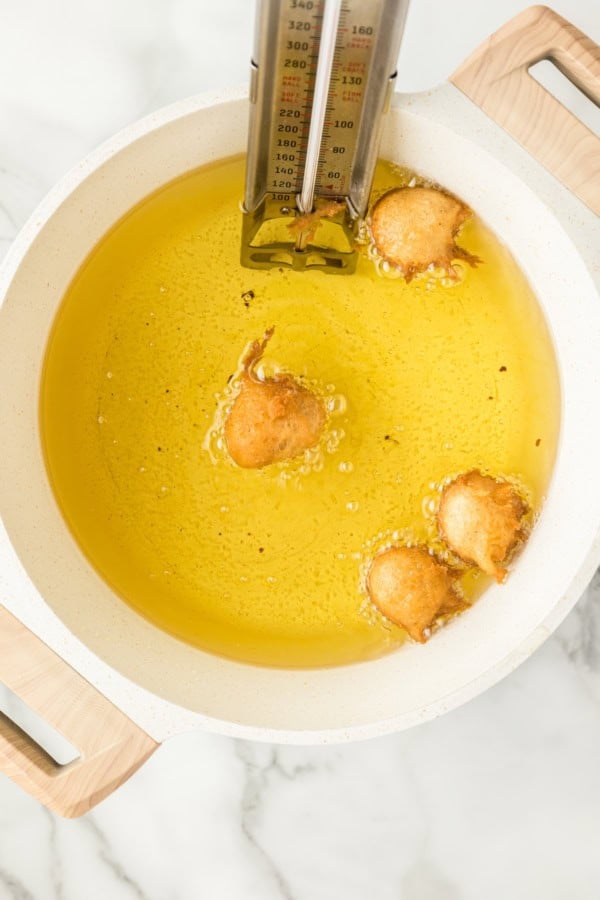
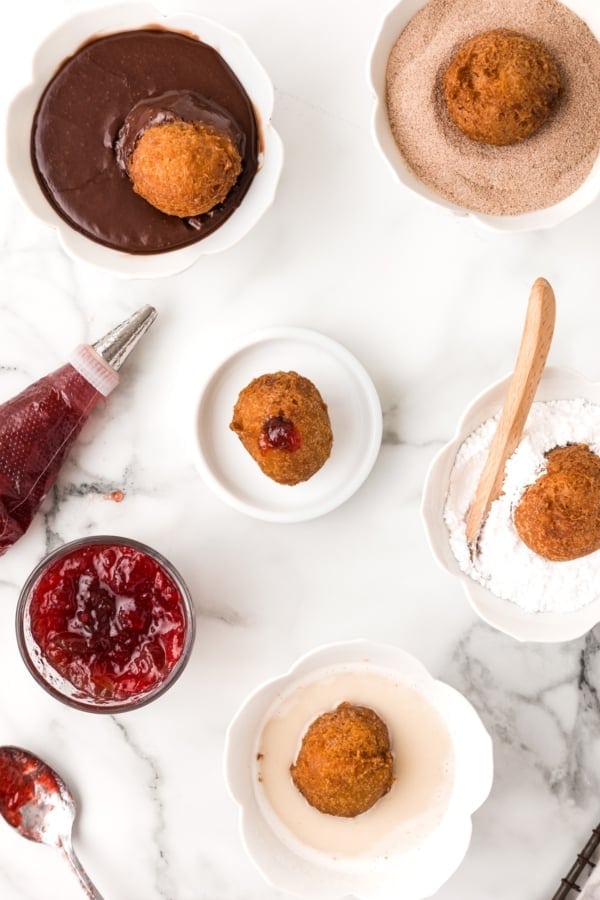
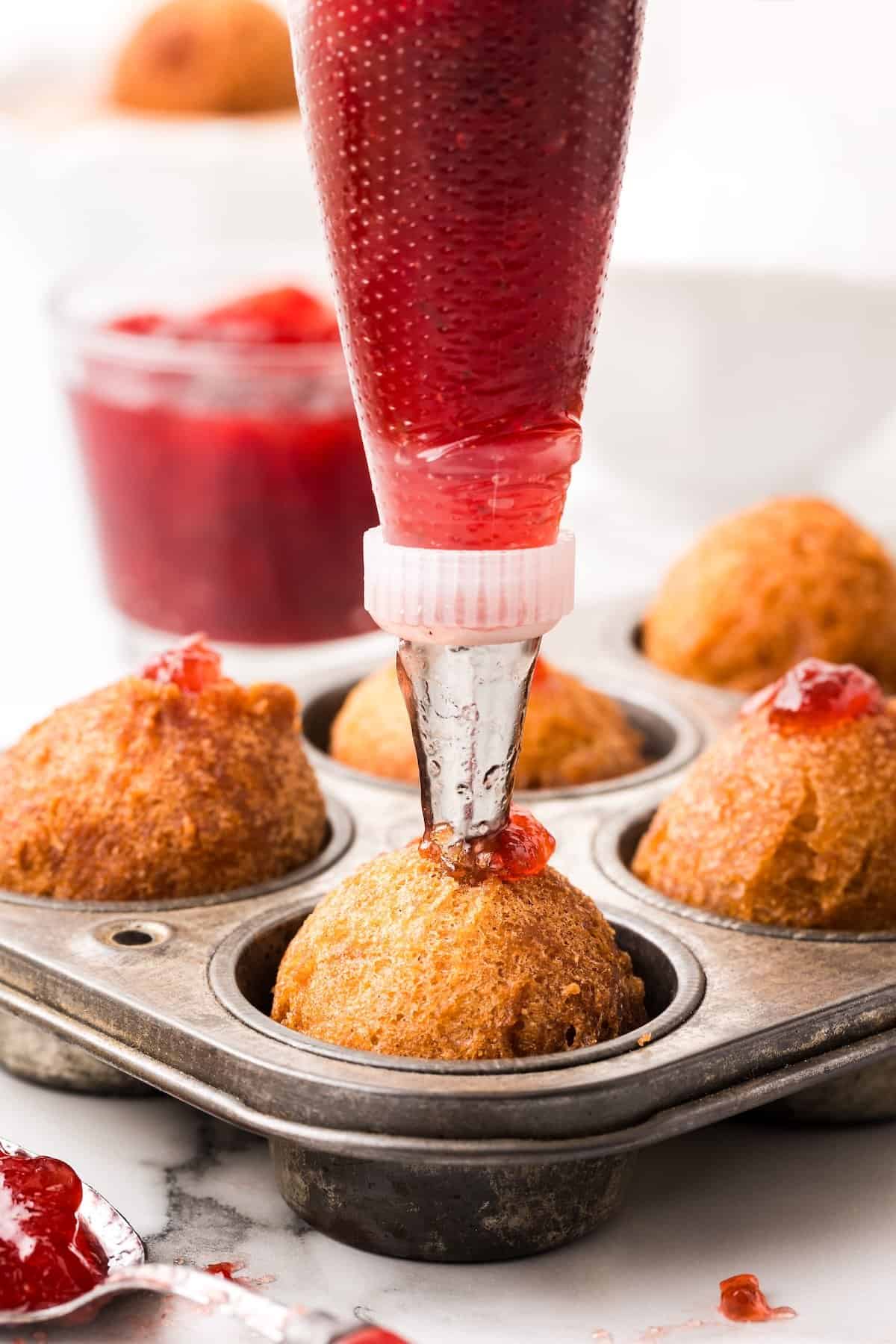
Toppings, Glazes, and Filling Options for Donut Holes
- Glazes: Chocolate glaze is my favorite! You can also try strawberry glaze (like the kind I use on my air fryer donuts), cherry glaze, maple glaze, or whatever else sounds good to you. Just add a little of your chosen extract flavor to the glaze recipe included in the recipe card below.
- Cinnamon Sugar: As soon as the donut holes are removed from the oil, toss them in cinnamon sugar right away so it sticks.
- Powdered Sugar: A classic choice! Drain the donut holes on paper towels and then toss the donut holes in powdered sugar once they’ve cooled to room temperature.
- Fillings: Once they’re cool enough to handle, you can use a piping bag to fill the donut holes with whatever you want! Some of my favorite fillings for filled donuts include fruit jelly, homemade nutella, zesty lemon curd and sweet chocolate buttercream.
- Toppings: Chopped nuts, candy bars, cookies (like Oreos), shredded coconut, or festive sprinkles are always great choices. Add them right after dipping the donuts so they stick!
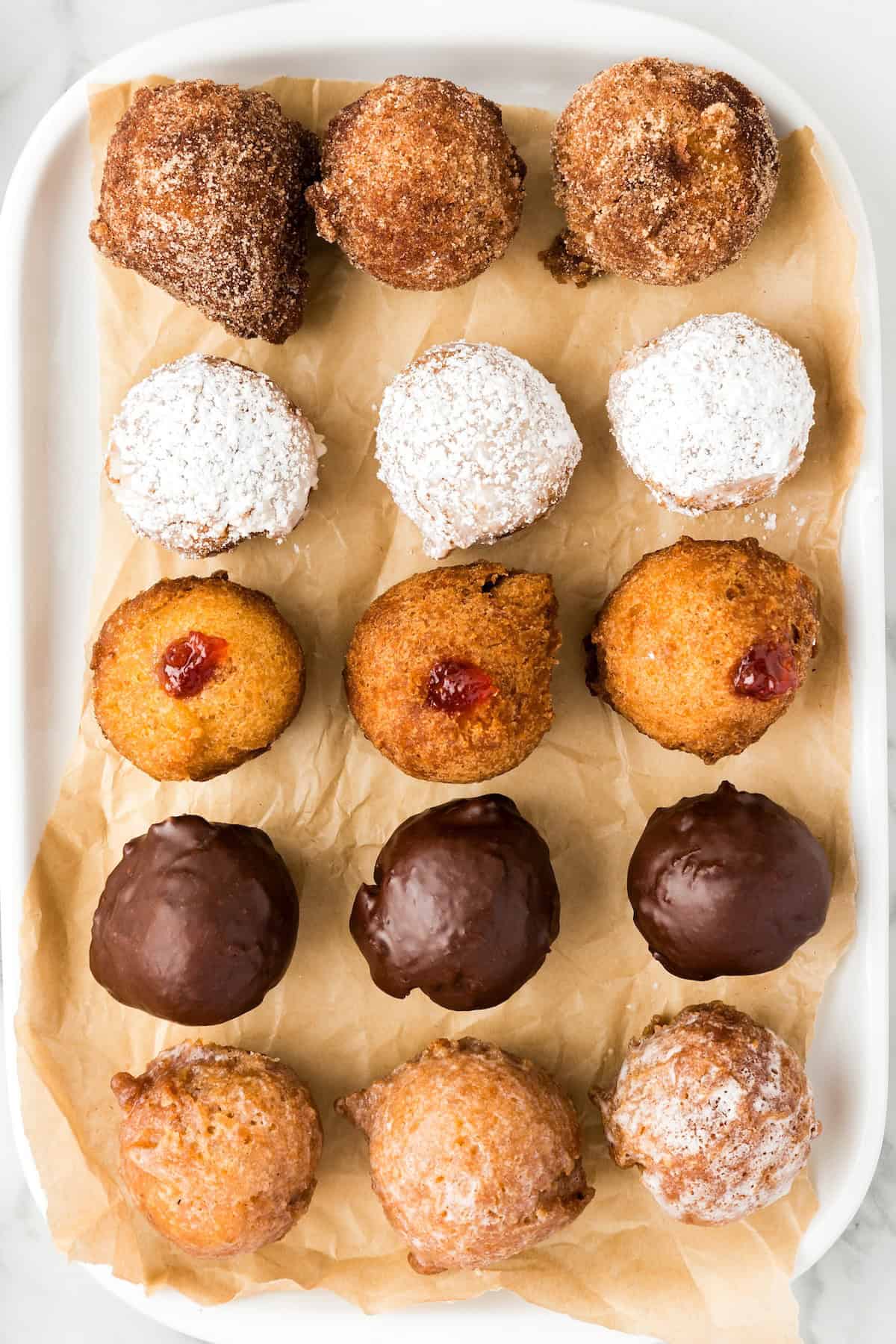
Frequently Asked Questions
No, this recipe is yeast-free. It uses baking powder as a leavening agent, making the process quicker and simpler with no rising time required.
Sadly no, this dough is more of a batter and specifically made for frying. It will not bake correctly in the oven and definitely would not be round in shape.
Yes, you can make the batter and store it in the fridge for up to 24 hours before. The first reaction of the baking powder happens when mixed with liquid and the second rise is triggered by heat.
Store any leftovers in an airtight container at room temperature for up to 2 days. For longer storage, you can freeze them, but it’s best to consume them fresh for optimal taste and texture.
Easy Donut Hole Recipe (No Yeast)
Ingredients
- 1 ½ cup all-purpose flour
- ½ teaspoon salt
- ¼ to ½ teaspoon cinnamon and/or nutmeg, optional
- 1 tablespoon baking powder
- ½ cup whole milk
- 1 large egg
- ⅓ cup granulated sugar
- 2 tablespoons melted butter
- Vegetable oil, for frying
Traditional Glaze
- 2 cups powdered sugar
- ⅓ cup half and half, or whole milk
- 1 teaspoon vanilla extract
More Topping Options
- Cinnamon Sugar
- Chocolate Glaze, 1 batch
- Fruit Jelly/Jam, Nutella, or Lemon Curd, for filling
- Powdered Sugar, about 1.5 cups
Want to save this recipe?
Instructions
- Whisk together the flour, salt, optional cinnamon, and baking powder in a medium-sized bowl. Set aside.
- Pour oil into a large, deep skillet for frying. You want the oil to be about 2 to 3 inches deep. Heat the oil and keep it between 360°F to 375°F. I highly recommend using a clip-on pot thermometer to ensure the temperature stays even for best results! However, you can test the oil by pouring a drop of water into the pot; if it sizzles across the top, it’s ready.
- While the oil is heating up… Whisk together the milk, egg, sugar, and butter in a large-sized bowl. Add the dry ingredients to the wet ingredients and stir to combine thoroughly, but do not over-mix.
- The batter will be very sticky, so I highly recommend using a small cookie scoop (spritzed with a little non-stick spray) to scoop about 2 teaspoons worth of dough for each donut hole. You can also use two spoons, one to scoop and one to push the dough off the first spoon and into the hot oil, but they will not be as perfectly round.
- Drop the dough into the hot oil, cooking about 5 to 7 donut holes at a time. Cook donut holes for 1 to 2 minutes on each side, flipping as needed. The donuts will spread out and roll/flip as they cook after being dropped into the oil. Do not overcrowd them or they will not cook evenly!
Traditional Glaze
- Transfer donut holes to a paper towel lined plate after frying and allow them to cool for 1 to 2 minutes. Whisk together powdered sugar, half and half, and vanilla extract until smooth.
- Dunk the still warm donut holes in the glaze and place on a wire cooling rack to allow any excess glaze to drip off. Enjoy immediately!
Cinnamon Sugar
- When the donuts are cooked through and golden brown, remove them from the oil and immediately toss donuts in cinnamon sugar.
Powdered Sugar
- Transfer donut holes to a paper towel lined plate after frying. Wait until the donut holes are fully cooled before tossing in powdered sugar! You can do this in a bowl, but I find it much easier to add the powdered sugar to a paper bag (or ziplock bag) and shake to coat a few donut holes at a time.
Filled Donut Holes
- Transfer donut holes to a paper towel lined plate and let them cool for a few minutes until safe to handle. Add your chosen filling to a piping bag with a small round tip.
- Pipe filling into the center of each donut hole by pushing the tip into the center and gently squeeze in the filling. Then add your desired glaze or topping. If you want your filled donut holes to be coated in cinnamon sugar, immediately toss donut holes in cinnamon sugar after frying. Allow to cool slightly before adding filling.
⭐️ Tried this recipe? Leave a comment and rating! It only takes a minute and helps support our family-run blog. ❤️
Notes
Video
Nutrition
Categories:
More Sweet Breakfast Recipes To Try
- This soft Mallorca bread tastes like it’s straight from a Puerto Rican bakery.
- You won’t be able to resist this brown sugar banana bread recipe with its crackly top.
- Secretly made with store-bought dough, this easy cinnamon bread recipe is a family favorite.
- Made with canned cinnamon rolls, these cinnamon roll waffles couldn’t be any easier.
- This blueberry scone recipe is so buttery and flaky. Don’t like blueberries? Try my chocolate chip scones instead!
Post may contain affiliate links. Read my disclosure policy.


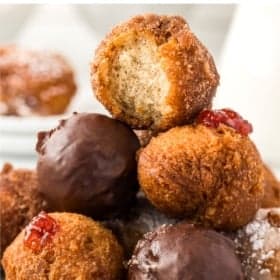

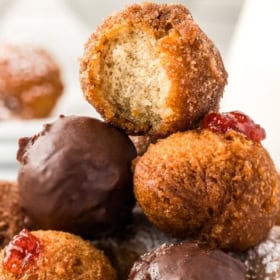


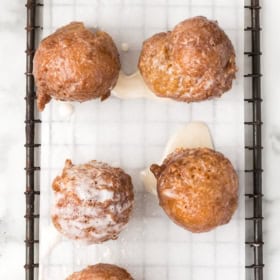
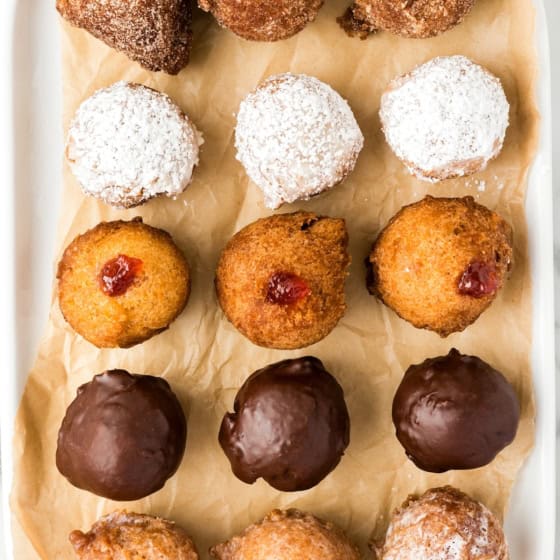

We made this for Mother’s Day and loved them. So fun and easy. And tasty
Burnt a few but finally got the hang of it. Thank you for this, they turned out delicious!